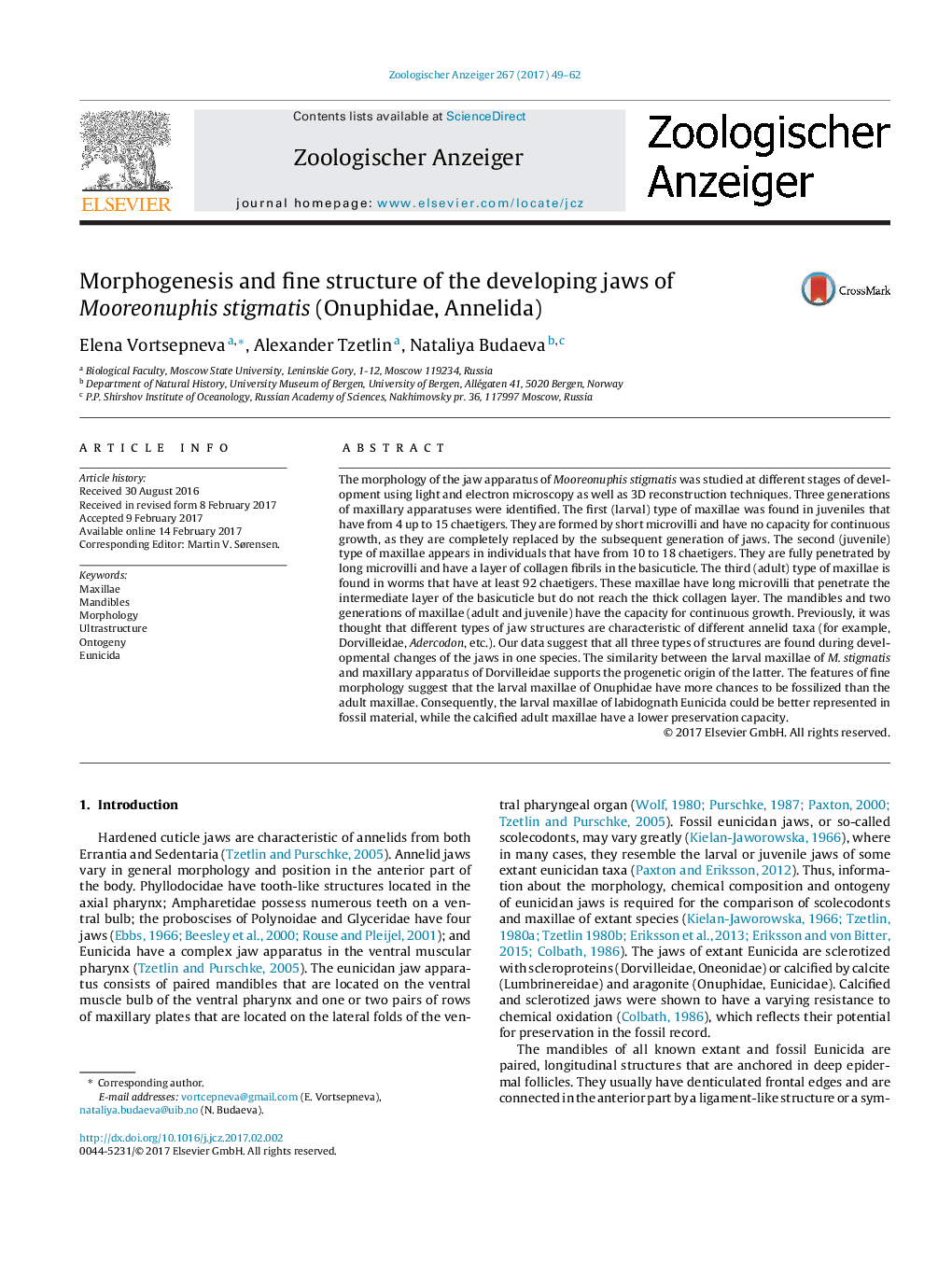| کد مقاله | کد نشریه | سال انتشار | مقاله انگلیسی | نسخه تمام متن |
|---|---|---|---|---|
| 5586415 | 1568608 | 2017 | 14 صفحه PDF | دانلود رایگان |

- At least three generations of maxillae that differ in morphology and ultrastructure are present in the ontogeny of Mooreonuphis stigmatis.
- The larval generation of maxillae in M. stigmatis has no capacity for continuous growth and is shed during development, which is similar to the maxillae of Dorvilleidae.
- The juvenile and adult maxillae and mandibles of M. stigmatis are penetrated by long microvilli, and they have the capacity for continuous growth.
- The larval maxillae of labidognath Eunicida could be better represented in the fossil material than the adult maxillae.
The morphology of the jaw apparatus of Mooreonuphis stigmatis was studied at different stages of development using light and electron microscopy as well as 3D reconstruction techniques. Three generations of maxillary apparatuses were identified. The first (larval) type of maxillae was found in juveniles that have from 4 up to 15 chaetigers. They are formed by short microvilli and have no capacity for continuous growth, as they are completely replaced by the subsequent generation of jaws. The second (juvenile) type of maxillae appears in individuals that have from 10 to 18 chaetigers. They are fully penetrated by long microvilli and have a layer of collagen fibrils in the basicuticle. The third (adult) type of maxillae is found in worms that have at least 92 chaetigers. These maxillae have long microvilli that penetrate the intermediate layer of the basicuticle but do not reach the thick collagen layer. The mandibles and two generations of maxillae (adult and juvenile) have the capacity for continuous growth. Previously, it was thought that different types of jaw structures are characteristic of different annelid taxa (for example, Dorvilleidae, Adercodon, etc.). Our data suggest that all three types of structures are found during developmental changes of the jaws in one species. The similarity between the larval maxillae of M. stigmatis and maxillary apparatus of Dorvilleidae supports the progenetic origin of the latter. The features of fine morphology suggest that the larval maxillae of Onuphidae have more chances to be fossilized than the adult maxillae. Consequently, the larval maxillae of labidognath Eunicida could be better represented in fossil material, while the calcified adult maxillae have a lower preservation capacity.
Journal: Zoologischer Anzeiger - A Journal of Comparative Zoology - Volume 267, March 2017, Pages 49-62